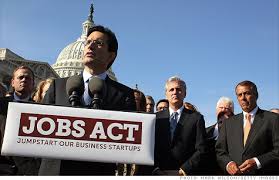 The world doesn't realize it yet, but three years ago Congress passed the most important piece of economic legislation since the Great Depression of the 1930's. It's called the JOBS Act. Both commercial brokers and commercial mortgage brokers can now use this new legislation to cheaply and easily raise money for their ventures.
The world doesn't realize it yet, but three years ago Congress passed the most important piece of economic legislation since the Great Depression of the 1930's. It's called the JOBS Act. Both commercial brokers and commercial mortgage brokers can now use this new legislation to cheaply and easily raise money for their ventures.
First let me define the problem. For the past seventy years it has been unnecessarily difficult for company owners and syndicators to raise investment money. A businessman or syndicator could either register his new investment offering with the SEC - at a cost of 18 months and $300,000+ in legal and accounting fees - or he could quickly and cheaply do a private placement offering under Reg D.
The problem with a Federal Regulation D offering, however, was that the company or syndicator was not allowed to do any public advertising. This meant no TV ads, no newspaper ads, no mass mailings, no flyers, and no Google ads. The sponsor could only make the offer to friends and wealthy acquaintances with whom he had a prior personal or business relationship. Hence the term, private offering. The result was that it has been extremely difficult for small businessmen and real estate investors to raise equity. Heaven only knows how many more new businesses would have been formed in America without this burdensome restriction.

Then the Great Recession hit. Few have any idea how close the U.S. economic system came to failure. In my opinion, former Fed Chairman Ben Bernanke is as much a national hero as Patton or MacArthur. Eventually many of the greatest economic minds in our country gathered around a conference table and brain-stormed about how to get the U.S. economy rolling again.
"Hey, guys, you know what might really help new companies form and hire new workers? What if new companies and new ventures could raise equity much more easily? Hedge funds can easily raise money because they are allowed to publicly advertise to accredited investors. Let's allow businessmen and syndicators to publicly advertise, as long as they take careful steps to make sure that each and every investor is accredited. After all, accredited investors are rich. Even if an accredited investor is personally clueless, he can afford to hire a CPA or attorney to check out the investment."
And so the JOBS Act was passed on April 15, 2012. The acronym stands for Jumpstart Our Business Start-ups. Under this act, companies, syndicators, and developers are now allowed to publicly-advertise to accredited investors to invest in their venture. The big commercial brokers - like CBRE and Marcus & Millichap - are already using the JOBS Act to sell commercial real estate. No longer do you have to buy the whole property. Now you can just invest $100,000 in a new LLC formed to buy and operate the property.

But what about commercial mortgage brokers? How can a commercial loan broker use the JOBS Act? For one thing, a whole new class of hard money lenders is appearing on the scene. These new hard money lenders raise their lending dough by syndicating a different group of accredited investors for each new loan.
There is absolutely no reason why YOU can't start syndicating private investors and funding your own commercial loans. I have been telling you for years that the real money in the mortgage business is in loan servicing. Remember, you can always hire a subservicer to do the actual work of loan servicing. You charge your investors $400 per month to service the loan, and then you pay the subservicer $50 per month to do the actual work.
But where are you going to find rich investors in invest in your loans? Helloooo? Aren't you a commercial mortgage broker? Aren't almost all of your borrowers rich? An investor is an investor. The same guy who owns commercial real estate is the same guy who owns stocks, bonds, and first trust deeds. Don't most of your commercial mortgage borrowers already have large IRA's or pension plans with money just earning 1% to 3% in bonds? Folks, this is easy ... and the average commercial hard money broker makes five times more per hour than the average commercial loan hack. After all, when you own a hard money shop, you are Loan Committee.
Got a commercial loan that is not quite perfect? Is your client's commercial property partially vacant? Do you need a lender who will allow the seller to carry back a second mortgage? Does your client have a balloon payment coming due on his commercial property? Has your bank offered him a discounted pay-off? Does your borrower have less-than-stellar credit? Is your client's company losing money? Is your borrower a foreign national? Do you need a non-recourse loan?
Got a drop-dead gorgeous deal that is much too perfect for a private money lender?
Because of all of the commercial mortgage loans ballooning in 2015, 2016, and 2017, the commercial mortgage brokerage business may have the brightest prospects of any profession in the U.S. right now. If only you actually knew what on earth you were doing...
I laugh to myself whenever I make the following offer - to trade 2,000 commercial real estate loan officers working at banks for just one of yours. Turning down this offer is like saying to Giselle, "Its true, Giselle, that I'm not in a committed relationship right now, but I'm also not interested in taking you out to dinner after Tom Brady dumped you. You'll have to find someone else to console you." Really????? BTW, I heard that on photo shoots Mrs. Brady (now retired) is one of the sweetest, most humble ladies you could ever meet. Nice.
You can now place business loans - like equipment loans, inventory loans, etc. - using C-Loans.
We just paid our first $500 commission to a mortgage broker who convinced a banker buddy to join C-Loans as a lender! I am so excited.








 The most helpful business book that I have ever read is Robert Ringer's 1973 New York Times #1 Best-Seller,
The most helpful business book that I have ever read is Robert Ringer's 1973 New York Times #1 Best-Seller, 

 The other day I received an email flyer from a commercial broker trying to sell an apartment building. The commercial broker boasted that this potential investment offered a whopping cap rate of 14%. The first thought that passed through my head was that this property was almost certainly in a war zone.
The other day I received an email flyer from a commercial broker trying to sell an apartment building. The commercial broker boasted that this potential investment offered a whopping cap rate of 14%. The first thought that passed through my head was that this property was almost certainly in a war zone.
 Commercial loan demand is both seasonal and predictable.
Commercial loan demand is both seasonal and predictable. 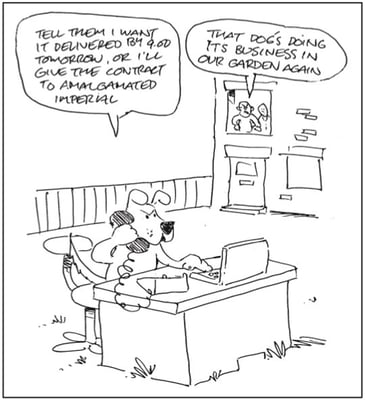
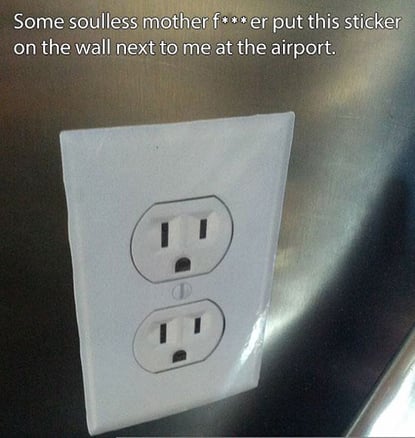





 I'm sure that you already know a great deal about commercial bridge loans, but I hope to add even more to that knowledge today. If you are a commercial broker - a commercial real estate broker or salesman - today's training article will be particularly helpful. By the way, it is the custom and practice in the industry to call commercial real estate salesmen
I'm sure that you already know a great deal about commercial bridge loans, but I hope to add even more to that knowledge today. If you are a commercial broker - a commercial real estate broker or salesman - today's training article will be particularly helpful. By the way, it is the custom and practice in the industry to call commercial real estate salesmen 
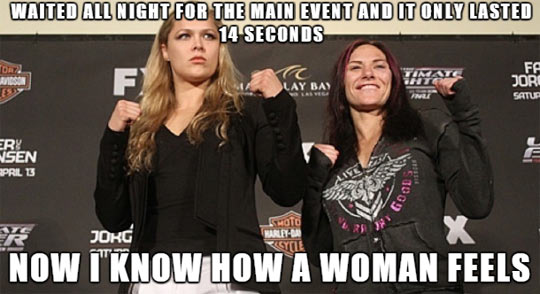

 Seventy-five percent of the time when a developer calls a commercial mortgage broker to help him place a commercial construction loan - that deal is NOT do-able. Why? Because the developer doesn't have enough equity in the deal. He doesn't have enough
Seventy-five percent of the time when a developer calls a commercial mortgage broker to help him place a commercial construction loan - that deal is NOT do-able. Why? Because the developer doesn't have enough equity in the deal. He doesn't have enough 


 A handful of well-trained commercial mortgage brokers are about to make a fortune originating commercial construction loans over the next few years. There are three reasons why this is true.
A handful of well-trained commercial mortgage brokers are about to make a fortune originating commercial construction loans over the next few years. There are three reasons why this is true.




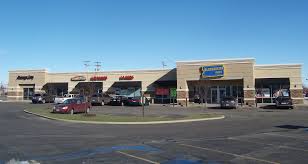 Question: What is
Question: What is 

 Even though I have been in the commercial mortgage business for 35 years now, I still learn new commercial real estate finance (CREF) terms every month. Here are some CREF terms that I've learned recently:
Even though I have been in the commercial mortgage business for 35 years now, I still learn new commercial real estate finance (CREF) terms every month. Here are some CREF terms that I've learned recently:


